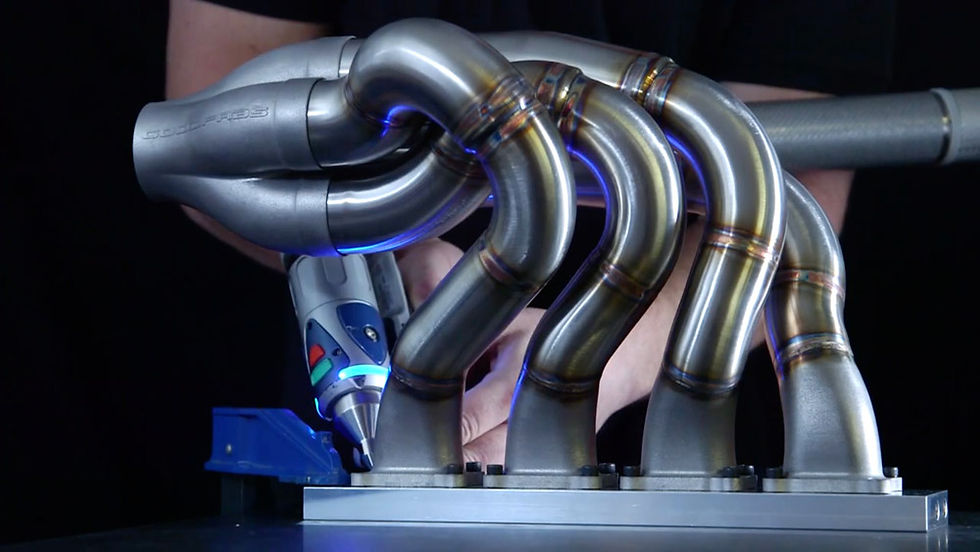How to optimise the inlet bell mouth
- Good Fabrications Ltd
- Mar 1, 2017
- 3 min read

Inlet plenum of 4 cylinder engine
Next to the design of an exhaust system and its gas dynamics, the induction system of the engine is equally as important. To ensure that the flow into the runners is following a smooth path, the upper bellmouth must be designed carefully.
A bell mouth is a channel used to direct the flow at the intake of the engine, often in a straight or tapered format. In many engines where the packaging is important these could even be designed in such a way that conventional bend tooling would not allow the fabrication of these and dedictated press tooling is needed to create these.
When the design is not considered a vena contracta can be formed. The vena contracta is a point in a fluid stream that passed through an orifice (or obstruction) where the diameter of the stream is smaller than the actual diameter.
It decreases the actual area exposed to the flow. By removing this vena contracta the mass flow through the pipe is able to increase, aiding the volumetric efficiency of the engine.
Runner without profile

The straight runner without any profiles, often made out of aluminium, appears to be having problems drawing the air into the pipe; the edges prevent the runner to allow a smooth transition between the air in the environment and the pipe. This obstruction creates a significantly large vena contracta.
It creates a flow obstruction in the design. This obstruction is created by a small turbulent area at the sharp edge of the runners. As the flow hits the sharp edge of the runner, the reflecting waves create a turbulent motion, obstructing the flow into the pipe at the location of the edges.
This indicates that a transition between the environment and the pipe would be beneficial for the flow entering the pipe.
There are different possibilities to assure that the flow from the environment has a smooth path to enter the pipe. The first possible transition would be a tangent circular edge.
Runner with tangent circular profile

By introducing the circular edge to the basic design, it can be seen that the vena contracta area has decreased, meaning the flow entrance would be improved.
Using this circular design, the change in direction does not happen as quickly as it does without the profile and might improve the flow into the pipe. It can also be noted that the runner with the tangent circular profile is drawing air from a bigger volume than the runner without a profile.
The straight runner does still show some signs of the original vena contracta, this indicates that the shape still has room for improvement. This can be done by changing the tangent circular profile to a tangent elliptical profile.
Runner with elliptical profile

As the presence of the vena contracta in the straight runner design indicated, the circular profile improved the flow, but still was not sufficient enough to keep the flow laminar and attached to the pipe.
Therefore the circular edge design was replaced by an elliptical profile where the Semi-Major axis and the SemiMinor axis were chosen to suit the shape of the runner and assure a good transition between the environment and the pipe volume.
The elliptical profiles were connected in a tangent manner so that there are no abrupt changes in the surface of the pipe.



